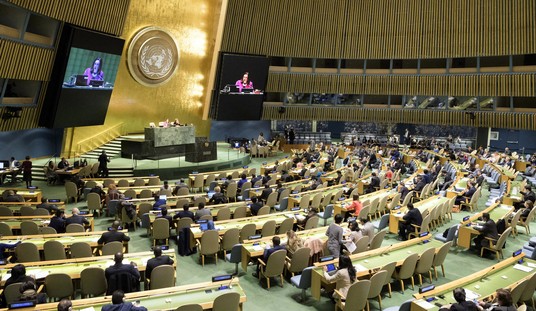If you’re not familiar with the work of John Lott (@JohnRLottJr on Twitter) and the Crime Prevention Research Center then you haven’t been paying attention. John is the author of The War on Guns (which I previously reviewed here) and countless studies on law enforcement data from across the nation. He and his partner, Carlisle Moody, have released a new study which digs into the details of (and the myths surrounding) one of the most common themes we hear in the mainstream media when it comes to lethal force encounters with law enforcement: white cops are more likely to shoot black suspects than those of other races. If you’ve been following the actual news and numbers from the FBI and law enforcement units around the nation you probably won’t be surprised to learn that the data just doesn’t support that assertion. (Fox News)
The day after a Minnesota cop was charged in the July shooting death of a black man, an in-depth study purported to show race generally does not play a role in police shootings.
Among the findings of the investigation released Thursday by the Crime Prevention Research Center: White police officers are not significantly more likely to shoot black suspects; body cameras have had little effect on decreasing police killings; the more cops at the scene, the less likely it is a suspect will be shot.
The study examined data from 2013 to 2015, a time period which almost perfectly bookends the police killing of Michael Brown in Ferguson, Mo., in August 2014, an episode that helped lead to the rise of the Black Lives Matter movement and placed increased scrutiny on police shootings. Yet, the research team of John Lott and Carlisle Moody found the percentage of black suspects killed in the 19 months before Brown’s death (24.8 percent) was almost exactly the same as the percentage killed in the 16 months after Brown’s death (25 percent).
The Fox News piece does a pretty good job of covering the highlights of the report, but you can read the entire thing here. It’s worth a look because Lott and Moody have spent years doing the legwork that the media refuses to engage in. They not only dredge up the real data compiled by the FBI, police departments and other agencies, but conduct the research to dig out details which mysteriously never make it into news reports and headlines.
Here are just a few of the more revealing findings:
There is some evidence that black officers are more likely than white officers to shoot black suspects, but there is no evidence that the reverse is true.
This was something of a wildly unexpected data point. I can’t even fathom a guess as to what might account for this, but the actual difference in the number of cases is small enough that it may just be an expected statistical aberration. What’s more revealing here is the amount of work that John had to do to assemble these numbers. The reason is that the media is very quick to point out when an officer is white if a black suspect is shot, but it’s rarely mentioned if the officer is black. The team had to go and dig up department photos in many cases to ascertain the race of the officers involved. Similarly, when a white suspect is killed in a lethal force encounter, race is also rarely mentioned if the incident receives any media attention at all. (Another oddity, since the majority of suspects killed by the police are still white.)
The more police officers who are on the scene, the less likely that a shooting will occur. This could be because criminals are less likely to attack police when more police are present.
Their initial guess here sounds about right, but additional factors may be in play while being impossible to quantify. Yes, even an armed suspect may hesitate to engage in a gun battle when he’s outnumbered by a significant margin as opposed to a situation where he feels he may be able to take down one or two cops and have a chance of escaping. There could also be a factor (in the rare instances where you find an actual racist, bad apple among the cops) that they will be more hesitant to act out of line with more of their colleagues watching. Either way, it’s just another interesting data point.
Contrary to the push by the Obama administration, body cameras don’t make a difference in the rate of shootings
This shouldn’t be too surprising given that the vast majority of cops aren’t looking to shoot anybody unless it’s the course of last resort. The major benefit of body cameras is not to somehow “shame the cops” into not murdering people, but to provide video evidence in the aftermath to establish precisely what happened rather than relying on frequently faulty (or intentionally dishonest) eye witness testimony. The bottom line here is that nearly all the police act the same whether they are being filmed or not.
Unionized police departments are more likely to shoot black suspects
Anyone have a guess as to what the heck this one means? First of all, I wasn’t aware that we had any significant number of cops who aren’t represented by a police union except in really small, rural towns. But what impact that would have on their reaction to a violent suspect is a mystery to me. It could just be another statistical anomaly.
There’s plenty more in the report, so give it a look. As usual, the truth is turning out to be considerably different than the portrayal you’ll be fed on MSNBC or the pages of the New York Times.








Join the conversation as a VIP Member